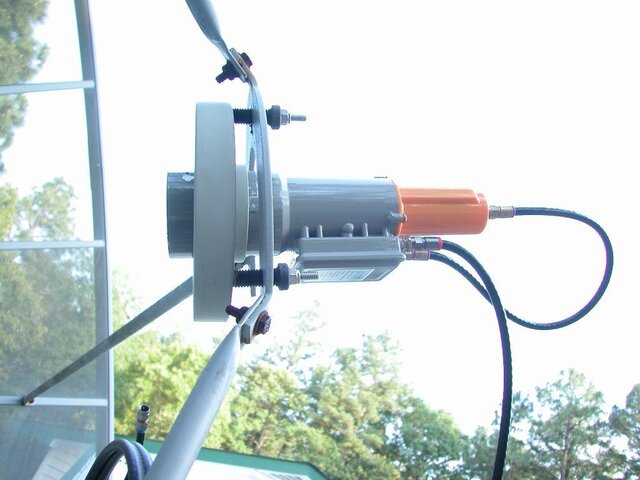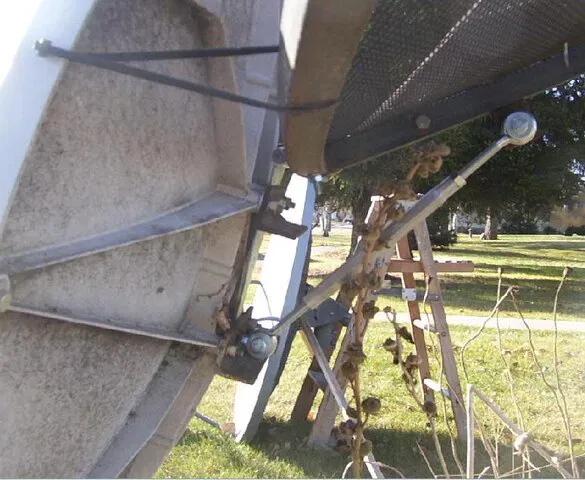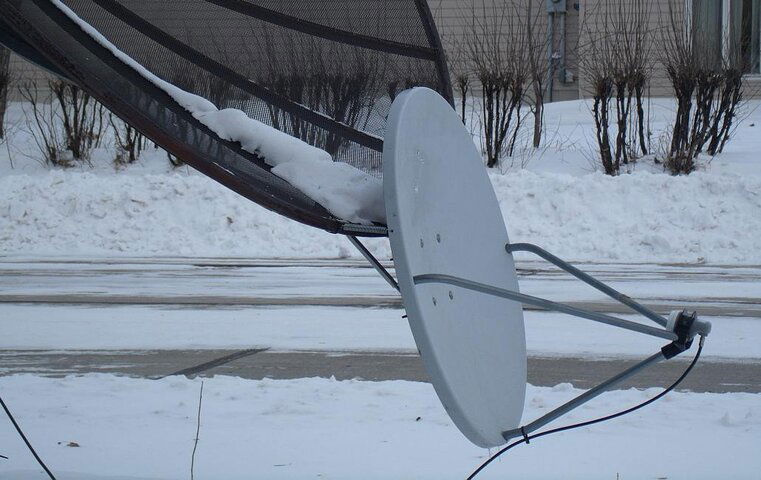I am using a DMX741 LNBF with my Chaparral scalar ring on my 10' mesh dish. I'm trying to get the focal length set properly.
I measured the diameter of the dish at 119" the dish depth at 24" which calculates to a focal length of 36.8776". Or a setting of 0.3098 on the LNBF scale.
My dish came with a "C" shaped mounting plate that the three support struts are attached to. The scalar ring is attached to the plate by three plastic thumb screws in a triangle pattern that have a bolt going through the outer groove of the scalar plate through the center of each of the thumb screws. I can loosen the lock nut on top of the plastic thumb screws then turn the thumb screws to tilt the scalar ring or move the scalar ring closer or further to the dish by turning the thumb screws an equal distance.
Depending on where I have the scalar ring distance set from the plate the feed horn face could be close or far from the face of the scalar ring if I keep the feed horn face at 36.8". The scalar ring is there for a reason, does it matter how much the feed horn sticks out from the scalar ring?
Also I noticed that when I tighten the set screw on the feed horn it pushes the feed horn off center to the right like the feed horn was tapered. Any suggestions as to how I can keep the feed horn perpendicular when I tighten the set screw?


I measured the diameter of the dish at 119" the dish depth at 24" which calculates to a focal length of 36.8776". Or a setting of 0.3098 on the LNBF scale.
My dish came with a "C" shaped mounting plate that the three support struts are attached to. The scalar ring is attached to the plate by three plastic thumb screws in a triangle pattern that have a bolt going through the outer groove of the scalar plate through the center of each of the thumb screws. I can loosen the lock nut on top of the plastic thumb screws then turn the thumb screws to tilt the scalar ring or move the scalar ring closer or further to the dish by turning the thumb screws an equal distance.
Depending on where I have the scalar ring distance set from the plate the feed horn face could be close or far from the face of the scalar ring if I keep the feed horn face at 36.8". The scalar ring is there for a reason, does it matter how much the feed horn sticks out from the scalar ring?
Also I noticed that when I tighten the set screw on the feed horn it pushes the feed horn off center to the right like the feed horn was tapered. Any suggestions as to how I can keep the feed horn perpendicular when I tighten the set screw?





